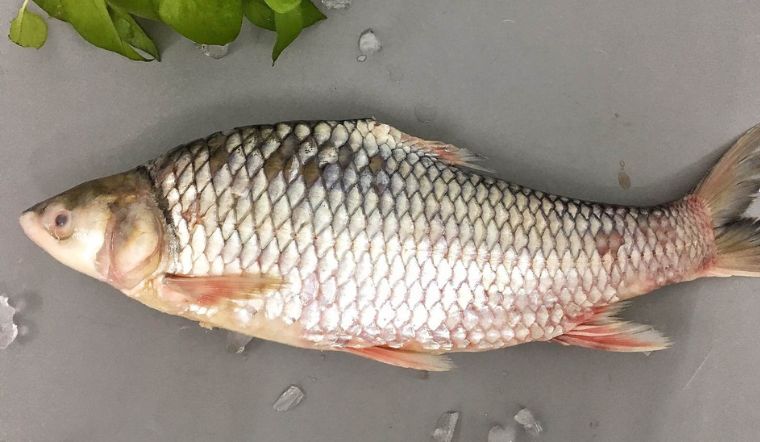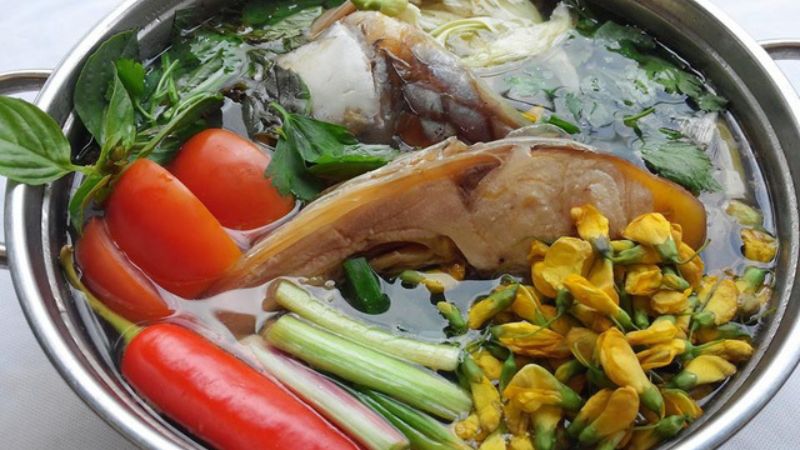The Unique and Elusive “Cá Cậu Ông Trời”: A Delicacy of Vietnam’s Mekong Delta
The Mekong Delta in southwestern Vietnam boasts a plethora of unique specialties, among which are fish with intriguing names that captivate both domestic and international tourists. One such peculiar fish is the “cá cóc,” whimsically dubbed “cá cậu ông trời” or “fish that belongs to the heavens.”
Ms. Hòa, a 30-year-old local from Vĩnh Long, shared that the name “cá cóc” originates from Cambodia and is derived from the distinct croaking sound “cóc cóc, cóc…” these fish make when caught. Interestingly, despite their name, they have no relation to toads, adding to the allure and mystery of this unique delicacy from the Mekong Delta.
Scientifically known as Cyclocheilichthys enoplos, the “cá cóc” belongs to the Cyprinidae family and is found in several countries within the Mekong River basin, including Vietnam. They are commonly found in areas such as the Tiền and Hậu rivers, swimming in schools and adapting well to deep waters or whirlpools.

Cyclocheilichthys enoplos, a unique species of fish found in the Mekong River basin, including Vietnam.
The “cá cóc” is characterized by its elongated spindle-shaped body and sharp, sword-like spines on its back, making it difficult to capture without caution. These spines can tear nets, providing an escape route from captors.
According to Ms. Hòa, after the flood season, female “cá cóc” migrate back to the Tonle Sap Lake to spawn, making it a golden opportunity for those eager to hunt this elusive fish.
There are two primary methods to catch “cá cóc”: one is to set submerged nets, and the other is to cast a line to the very bottom of the river. The latter method involves using a fishing line with a hundred or so hooks, each baited with a live shrimp, which is then released near the riverbed. As the water rises, the shrimp swims, attracting the fish to bite.

The spawning season of the “cá cóc” female is a prime time for those eager to hunt this fish.
Once abundant in the Mekong Delta, the “cá cóc” is now becoming increasingly rare. Locals assert that in the past, one could predict the presence of “cá cóc” in the region simply by observing the water and wind, but nowadays, sightings have become a rarity. Concerns about their potential extinction are growing, especially as tourists flock to the area, eager to taste this unique delicacy but often missing the opportunity.
In today’s market, “cá cóc” fetches a high price, reaching up to 450,000 VND per kilogram on e-commerce platforms and specialty shops in the Mekong Delta. This reflects their scarcity and value. Not only are they delicious, but they can also be prepared in a variety of mouthwatering dishes, such as “cá cóc” braised in coconut water, mild braised “cá cóc” with green tamarind, sour soup with fermented rice, or grilled “cá cóc” with salt and chili, each offering a distinct and captivating flavor for diners.

In the Mekong Delta, many restaurants have included “cá cóc” on their menus, but due to its rarity, guests are often advised to make reservations in advance. Among the dishes, braised “cá cóc” in coconut water stands out, offering a distinctive and appealing flavor when paired with fresh herbs.
The Captivating West Mekong Crape Myrtle: Unveiling Its Origins, Unique Characteristics, and Cultural Significance
In this article, let’s delve into the enchanting world of the Western O Moi flower. Native to the lush landscapes of Vietnam’s Mekong Delta, this floral beauty holds a special place in the hearts of the locals. With its vibrant hues and delicate fragrance, the O Moi flower has come to symbolize the unique culture and natural splendor of the region. Join us as we unravel the fascinating tale of this flower, exploring its origins, distinct characteristics, and the profound significance it holds for the people of the Western lands.
Exploring Duyen Hai (Tra Vinh): 5 Must-Visit Spots
Duyen Hai is a renowned tourist destination in the Tra Vinh province of Vietnam, offering a plethora of attractions for visitors to explore. Discover the top 5 must-visit locations in this charming coastal town, each boasting its unique beauty and allure. Uncover the secrets of this captivating region and immerse yourself in the local culture, natural wonders, and historic gems that Duyen Hai has to offer.





































